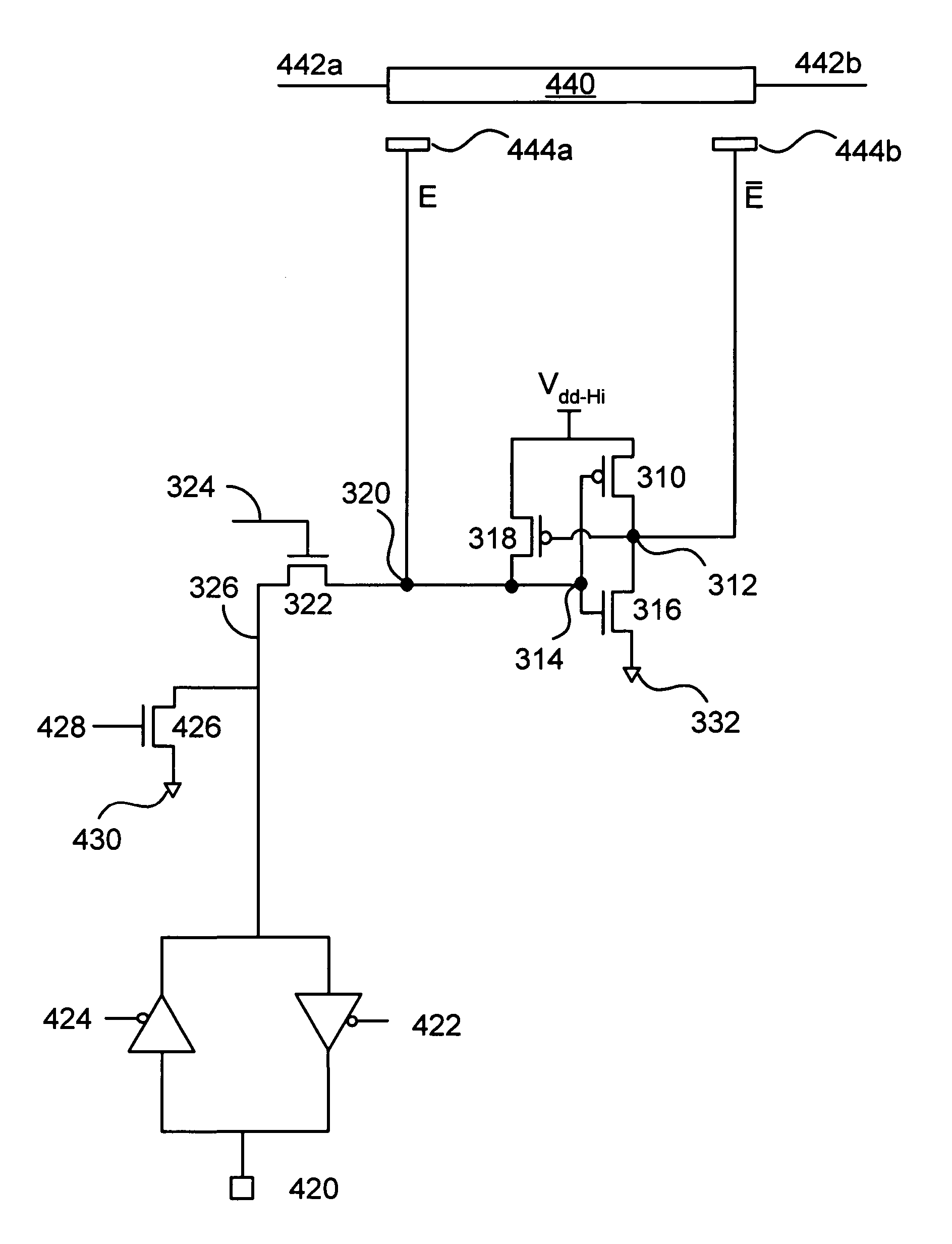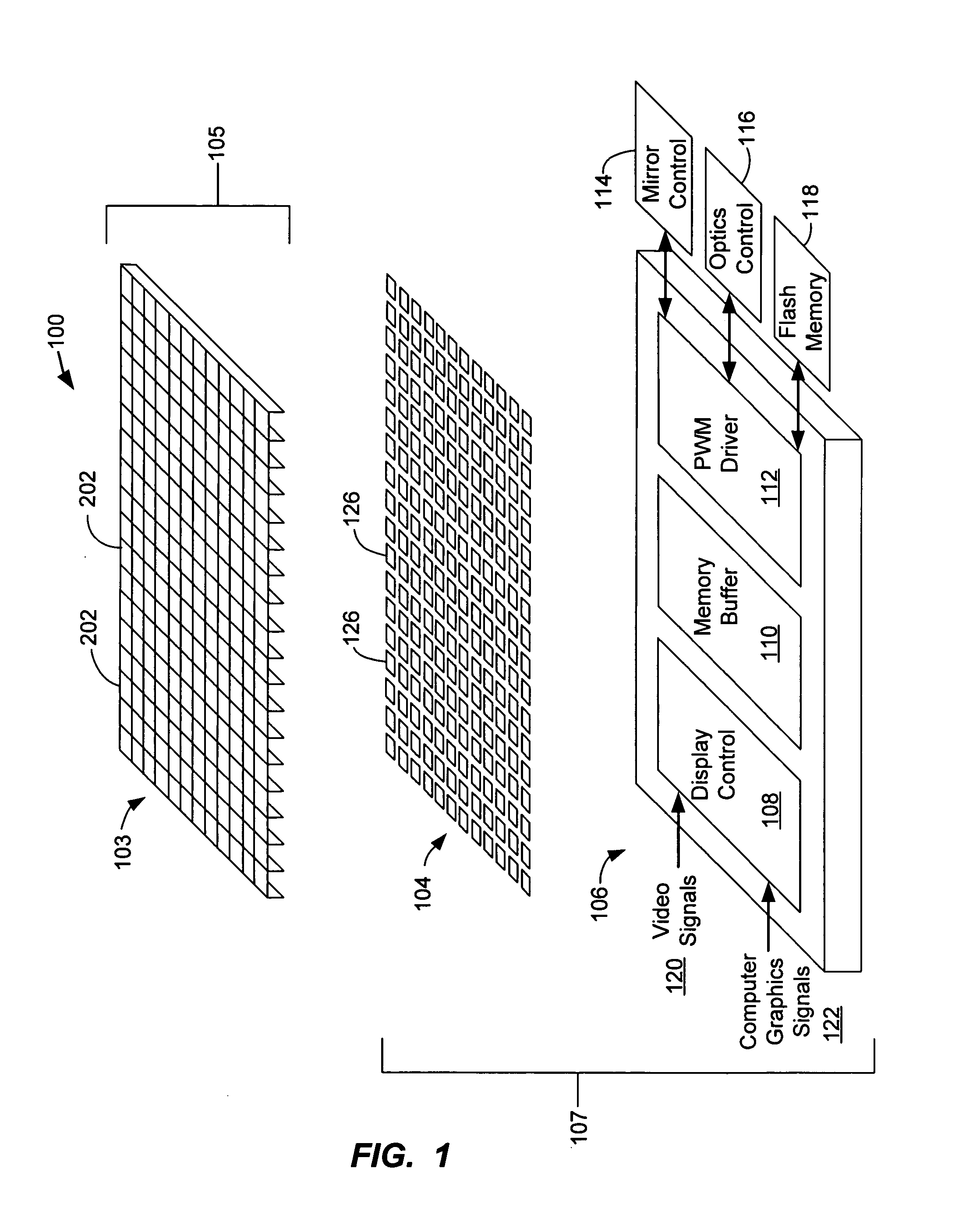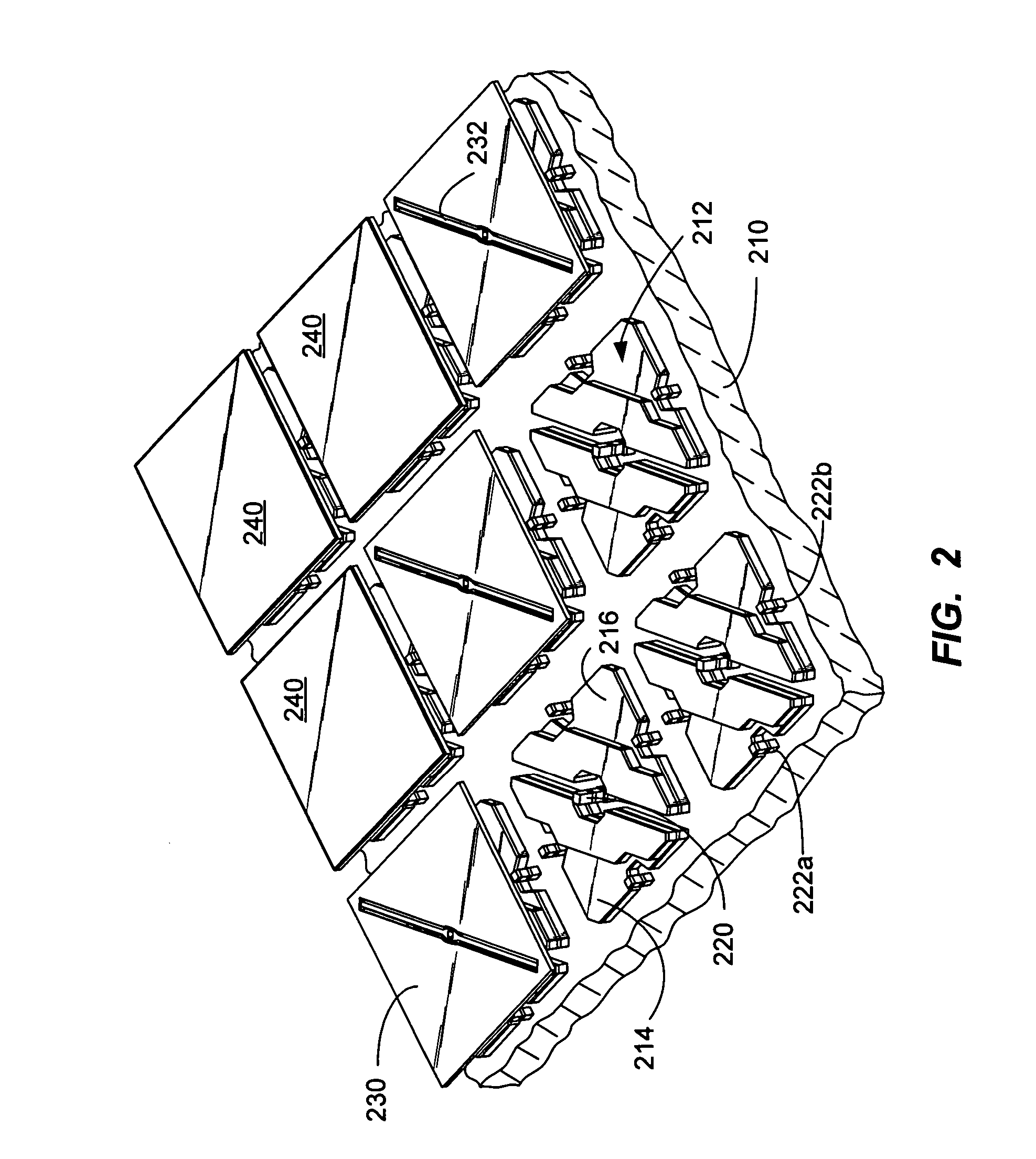Spatial light modulator with four transistor electrode driver
a technology of electrode drivers and transistors, applied in logic circuits, digital storage, instruments, etc., can solve the problems of increasing the silicon real estate used to fabricate arrays, the geometry of conventional sram cells restricts their applicability, and the number of transistors utilized, so as to reduce the size of electrode drivers, reduce the effect of real estate and faster write operations
- Summary
- Abstract
- Description
- Claims
- Application Information
AI Technical Summary
Benefits of technology
Problems solved by technology
Method used
Image
Examples
Embodiment Construction
[0024]According to the present invention, techniques related to spatial light modulators are provided. More particularly, the invention relates to a method and apparatus for providing control circuitry for actuation of mirrors in a spatial light modulator. Merely by way of example, the invention has been applied to a design of addressing circuitry suitable for driving electrodes associated with micro-mirrors in a spatial light modulator used in a display application. The method and apparatus can be applied to spatial light modulators as well as other devices, for example, micro-electromechanical sensors, detectors, and displays.
[0025]FIG. 1 is a diagram that illustrates the general architecture of a spatial light modulator (SLM) 100. The illustrated embodiment has three layers. The first layer is a mirror array 103 that has a plurality of deflectable micro-mirrors 202. In a preferred embodiment, the micro-mirror array 103 is fabricated from a first substrate 105 that is a single mat...
PUM
 Login to View More
Login to View More Abstract
Description
Claims
Application Information
 Login to View More
Login to View More - R&D
- Intellectual Property
- Life Sciences
- Materials
- Tech Scout
- Unparalleled Data Quality
- Higher Quality Content
- 60% Fewer Hallucinations
Browse by: Latest US Patents, China's latest patents, Technical Efficacy Thesaurus, Application Domain, Technology Topic, Popular Technical Reports.
© 2025 PatSnap. All rights reserved.Legal|Privacy policy|Modern Slavery Act Transparency Statement|Sitemap|About US| Contact US: help@patsnap.com



